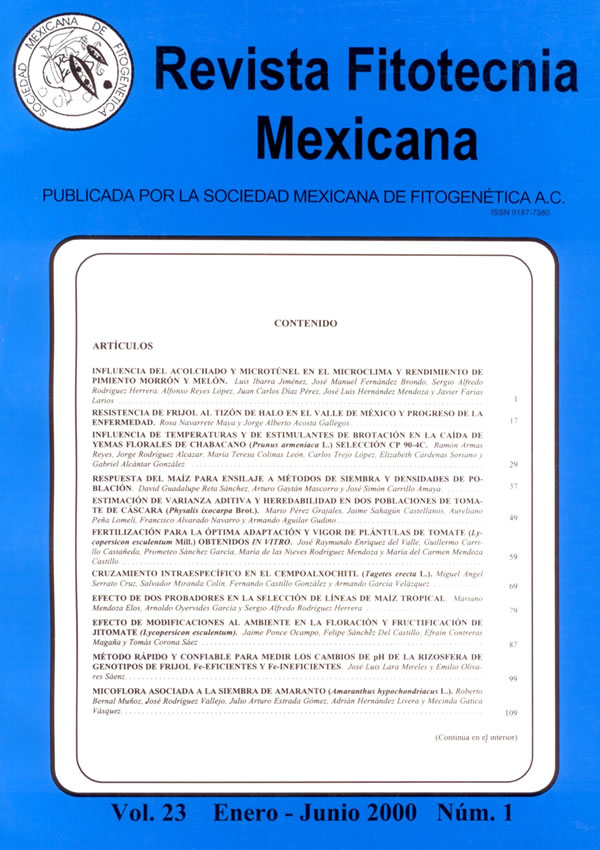EFFECT OF ETHREL ON LODGING RESISTANCE, YIELD AND YIELD COMPONENTS OF V-18 AND H-139 MAIZE GENOTYPES
Main Article Content
Abstract
In order to determine the effect of rate and application time of 2-chloroethyl phosphonic acid (ethrel) on lodging, ear leaf area, plant dry weight, grain yield and yield components, rates of 0.140 and 280 g per hectare of ethrel were applied al tassel primordial differentiation and ear primordial differentiation stage in the V-18 and H-139 maize (Zea mays L.), genotypes. A randomized complet blocks design with three replications and a split-split-plot treatments arrangement was used Application of 280 g ha-1 of ethrel reduced significantly ear leaf area (13 %), total dry weight al tassel (15 %), internodes length of the stem basal portion (3.4 cm), plant height (28 cm), lodging (25 %), physiological maturity period (12 days) and grain yield (13 %). Reduction of grain yield was due probably to decreased grains number and grain weight per scuare meter. Ethrel applied at ear primordia differentiation stage reduced in more extent lodging and ear leaf area than application at tassel primordia differentiation stage. The hybrid H-139 showed greater grain yield and lodging resistance that V-18 variety. Both genotypes showed negative correlation between application rate of ethrel and lodging, and positive correlation of lodging with ear leaf area and plant dry weight at harvest time.

